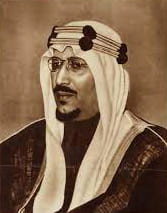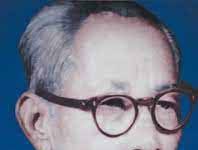King Saud bin Abdulaziz Al Saud | Brief Biography
King Saud bin Abdulaziz Al Saud
King Saud bin Abdulaziz Al Saud was the second king of Saudi Arabia, reigning from 1953 to 1964. He was born on 15 January 1902 in Kuwait and was the second son of King Abdulaziz Al Saud, the founder of the Kingdom of Saudi Arabia.
King Saud‘s early education was focused on Islamic studies and he also received military training. He was known for his leadership skills and bravery and took part in several military campaigns during his father’s reign. In 1932, he was appointed Crown Prince and was responsible for the administration of several regions in the country.
King Saud bin Abdulaziz became king upon the death of his father in 1953, and one of his first major decisions was to negotiate the formation of the Baghdad Pact, which was a military alliance between Middle Eastern and Western countries aimed at containing Soviet expansion in the region. He also signed several oil exploration agreements with foreign companies, which brought significant wealth to the country.
One of King Saud’s most notable achievements was the establishment of the first university in Saudi Arabia, King Saud University, in 1957. He also promoted the development of modern infrastructure and institutions, such as hospitals and roads, throughout the country.
However, King Saud’s reign was also marked by controversy and challenges. His policies were criticized for being financially irresponsible, and the country was facing economic difficulties due to rising expenses and declining oil revenues. In addition, King Saud’s government was accused of corruption and nepotism, and several factions within the royal family were vying for power.
In 1962, King Saud was forced to abdicate the throne in favor of his brother, King Faisal, due to growing discontent among the people and members of the royal family. He lived in exile in Greece for several years before returning to Saudi Arabia, where he lived a relatively low-profile life until his death in 1969. 0 0 0.
King Saud bin Abdulaziz Al Saud
Sources:
“King Saud.” Encyclopædia Britannica, Encyclopædia Britannica, Inc., www.britannica.com/biography/King-Saud.
“King Saud bin Abdulaziz Al Saud.” Saudi Aramco World.
“King Saud Bin Abdul Aziz Al Saud.” The Office of His Majesty the King – Kingdom of Saudi Arabia, www.king Saud.gov.sa/biography. ***
N.B. The article originally belongs to the book ‘Brief Biographies of Eminent Monarchs‘ by Menonim Menonimus.
Books of Biography by M. Menonimus:
- The World Writers-Brief Biographies
- Introduction to World Writers
- Introduction to World Personalities
- Love of Reputed Persons
- Brief Biographies of Ancient Thinkers and Writers..
Additional Searches:











